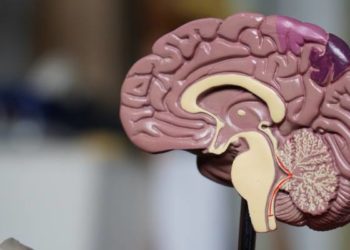#VisualAbstract: Global prevalence of depressive and anxiety symptoms in youth significantly increased during COVID-19
1. This meta-analysis found increased prevalence rates of clinically elevated anxiety and depression symptoms among youth during the COVID-19 pandemic.
2. Higher prevalence rates in data collected later in the pandemic, older adolescents, and females, as determined through moderator analysis, suggested that individual differences need to be considered when determining targets for mental health intervention.
Evidence Rating Level: 1 (Excellent)
Study Rundown: Since the start of the COVID-19 pandemic, youth around the world have had to endure numerous consequences of prolonged social isolation including school closures, missed milestones, increased family stress, and decreased peer interactions. These experiences have disrupted the everyday lives of youth during a crucial stage of their personal development and may serve as potential precipitants of mental health and psychological distress. Recent studies have established the global rise in mental illnesses among children and adolescents, albeit with considerable variability in prevalence rates reported. This current meta-analysis sought to attain more precise estimates of the global prevalence of clinically elevated symptoms of depression and anxiety in youth during the initial year of the COVID-19 pandemic through pooled study findings. In addition to deriving pooled prevalence estimates, demographic, geographical, and methodological factors were examined to further stratify and explain variability across studies. The main endpoint of the analysis was pooled prevalence rates of clinically elevated depression and anxiety symptoms in youth. In total, 29 studies consisting of 80,879 youth individuals were included where the pooled prevalence of clinically elevated depression and anxiety symptoms in children and adolescents were 25.2% and 20.5% respectively. These results suggested that the prevalence of depression and anxiety symptoms among youth have doubled during COVID-19 compared to pre-pandemic estimates. Furthermore, moderator analyses found higher prevalence rates among individual study results collected later in the pandemic, older adolescents, and females. Additional studies employing prospective measurements and randomization, including pre- to post-pandemic measurements, need to be conducted to evaluate the long-term mental health effects of COVID-19 and the implications of this crisis on mental and social development in youth. A limitation of this study was the underrepresentation of cross-regional differences in estimates of child and adolescent mental illness due to the pooled global estimates used in this meta-analysis, decreasing the generalizability of the study findings across different countries.
Click to read the study in JAMA Pediatrics
Click to read an accompanying editorial in JAMA Pediatrics
Relevant Reading: Impact of COVID-19 and lockdown on mental health of children and adolescents: A narrative review with recommendations
In-Depth [meta-analysis]: This random-effect meta-analysis included 29 eligible studies with 80,879 pooled participants from an initial review of 3,094 nonduplicate titles/abstracts and 136 full-text articles. Published studies were retrieved from 4 databases (PsycInfo, Embase, MEDLINE, and Cochrane Central Register of Controlled Trials) between January 2020 and February 2021 and unpublished studies were retrieved from PsycArXiv on March 8, 2021, with data analysis completed through March 2021. Inclusion criteria included studies published in English, sufficient quantitative data, and reported prevalence of clinically elevated depression or anxiety in children/adolescents (age ≤18 years). Key search categories and their affiliated terms were combined and included mental health, COVID-19, and child/adolescent. Overall, pooled prevalence estimates of clinically elevated depression and anxiety symptoms in the youth during COVID-19 were 25.2% (95%CI, 21.2%-29.7%) and 20.5% (95%CI, 17.2%-24.4%), respectively. Furthermore, moderator analyses revealed significant associations including higher prevalence of clinically elevated depression and anxiety symptoms in females and studies published later during the pandemic and higher prevalence of depressive symptoms in older children.
Image: PD
©2021 2 Minute Medicine, Inc. All rights reserved. No works may be reproduced without expressed written consent from 2 Minute Medicine, Inc. Inquire about licensing here. No article should be construed as medical advice and is not intended as such by the authors or by 2 Minute Medicine, Inc.







